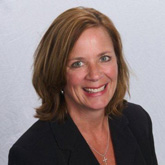
During the pandemic, hospitals have learned a lot about efficiencies, care redesign and maintaining high-quality care, all while managing drastic changes in how they typically operate. Chief Supply Chain Officer at Mercy Health, Lori Pilla, RN, says this is causing a shift in mindset. “Hospitals are having to decide the difference between need and want. They’re now forced to be good stewards of the resources they have,” she says.
At the onset of the pandemic in March, like many health systems, Mercy Health went into a tailspin as its need for personal protective equipment (PPE) soared.
“When it came to this particular crisis, we saw our use of PPE go up over 1,000% upfront,” says Pilla.
As hospitals were desperately trying to get PPE, medical suppliers were hindered in obtaining supplies, so they placed hospitals on allocation.
There were emergency supplies that the health system could access right away, but some of them had expired. “Most health systems’ reserve PPE stock is from back when SARS and Ebola were threats,” says Pilla, referring to the global diseases of 2003 and 2014, respectively. “No one had really paid attention to cycling that supply because it wasn’t something we were watching on a regular basis.”
So Pilla, along with her supply chain team and the Mercy data scientists, developed a mathematical algorithm to help the health system determine PPE velocity and forecast positive COVID-19 patients. Based on the algorithm, they were able to establish an emergency reserve supply to avoid another critical situation. They have made it a part of their emergency management plan to cycle through reserve PPE monthly so they won’t end up with expired products.
The team had about 45,000 workers. They broke it down into the number of workers per area and determined the types of PPE needed, based on level-of-care and patient subset. “We would then allocate that with 12-hour staff shifts at four shifts per week, and calculated the average PPE rate per day,” says Pilla. In the areas where there was less risk of exposure, staff would extend the use of their masks slightly longer. For trauma cases, they knew they would need more PPE, so they added 10% to accommodate those cases.
The team at Mercy configured their PPE algorithm into a business intelligence dashboard and uses it to determine their levels of PPE at any given time.
The algorithm was put into place at the end of March, and the health system benefited from it immediately. “We based our inventory and stocking on predictive velocity, and so far, we haven’t exceeded it,” says Pilla.
Share Email COVID-19, Q4 2020





